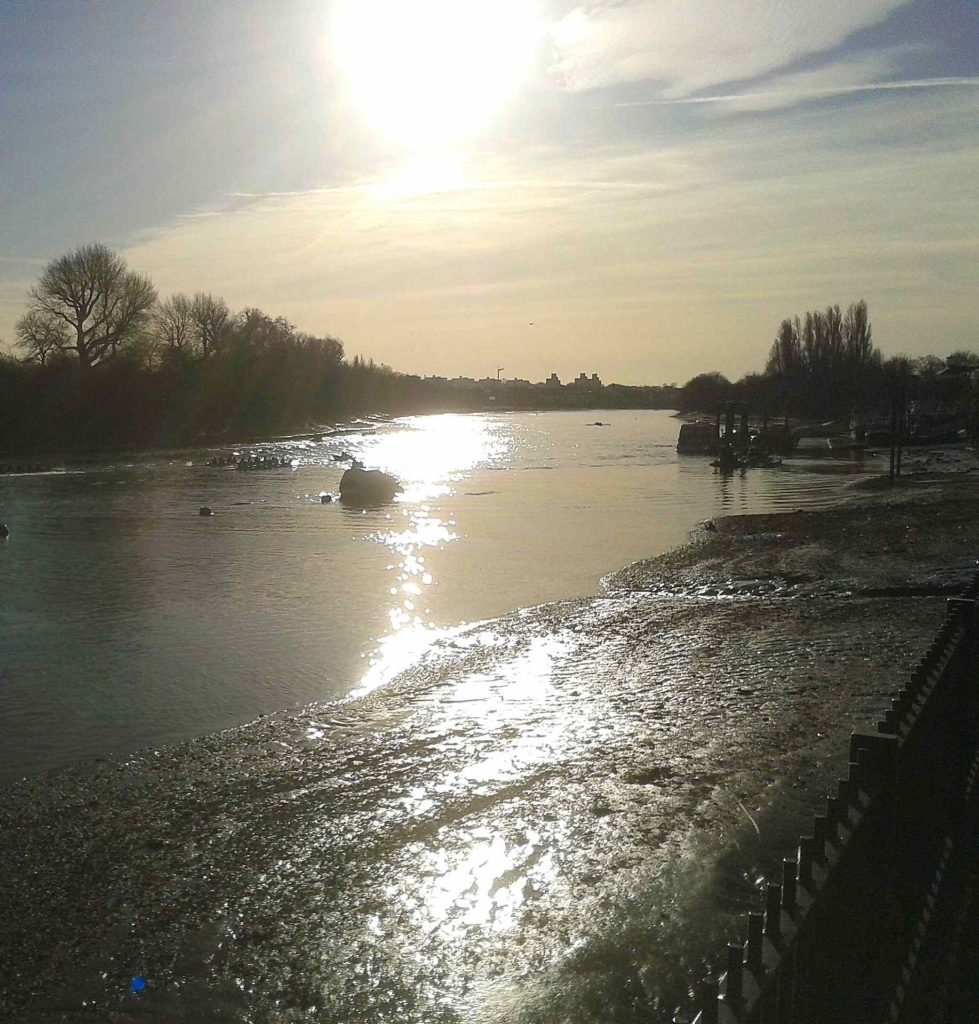
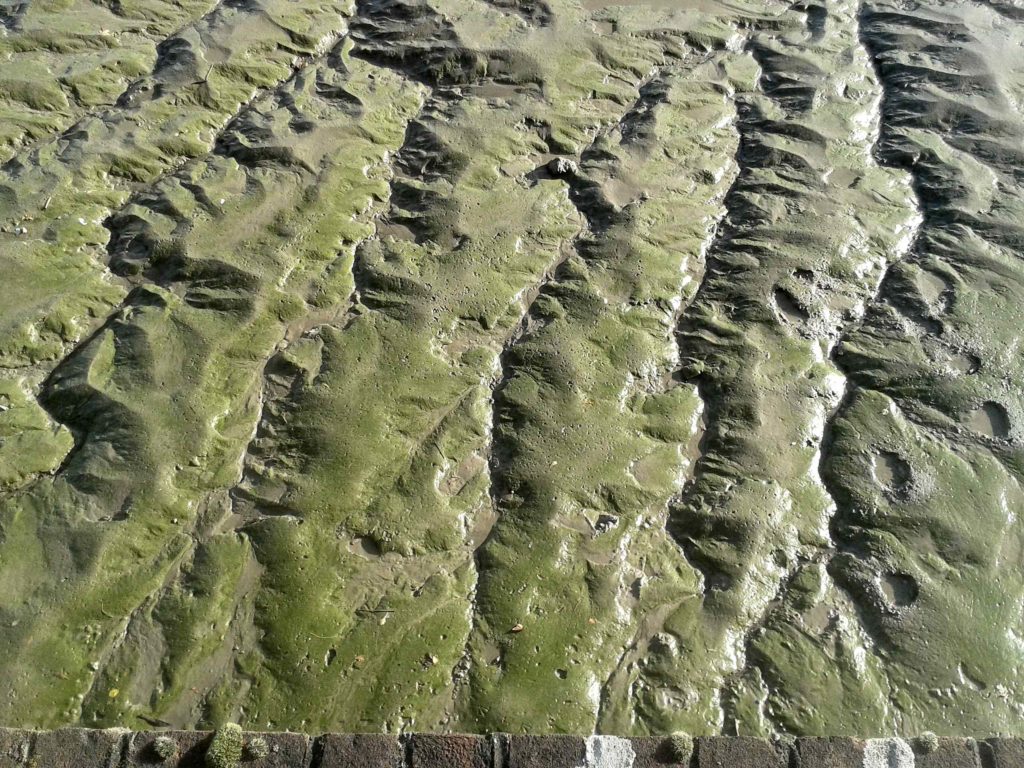
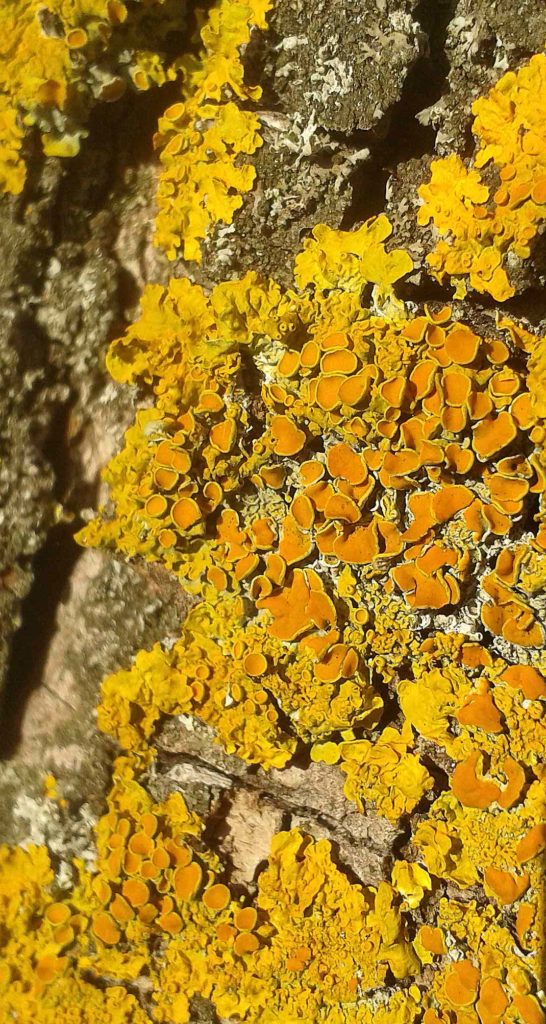
A reader of the RSPB’s members’ magazine, Nature’s Home, wrote in a letter to the editor that “If I had my time again I would try and be an all-round naturalist, instead of just a birdwatcher.” [Mike Strickland, Summer 2014 issue, ‘Your view’ page 13.] Well, good on you, Mr Strickland. He went on to praise “such ‘all-round giants’ as Gilbert White and Charles Darwin.” White wrote the Natural History of Selborne, covering topics such as the swallows that flew round his nice house, how to get a garden growing (buy several cartloads of manure – literally – and use it to build a raised veggie bed), the doings of a hibernating tortoise, and whether swallows spend the winter underwater or in holes somewhere. Darwin wrote about everything from Galapagos Finches to earthworms and human emotions, with a lot of time on dogs, pigeons, barnacles and natural selection.
Clearly Mr Strickland had a point. If we’re going to be rounded naturalists, we need to observe whatever is around us – slime moulds and lichens, aphids and fireblight, hoglice and cuckoospit, not just the elegant courtship dances of Great Crested Grebes.
The editor assured Mr Strickland that “The study of other forms of wildlife has definitely become more mainstream with more and more birdwatchers also taking a keen interest in dragonflies, butterflies and moths. While other wildlife has been a feature of the RSPB magazine for quite some time, birds will definitely remain at its heart.”
The other forms of wildlife that, we learn, birdwatchers bother to look at are apparently dragonflies, butterflies and moths. That’s just two groups really – Odonata and Lepidoptera; both are large, day-flying, colourful, and conspicuous – just like birds, but without the feathers – differing only in being insects. Forgivable, I guess. They are, basically, the next best thing: easy to notice, out there when you want ’em (shame they don’t fly all year), and best of all, not too numerous.
I mean, suppose the average birder wanted to get into the beetles, the Coleoptera. They can be found all over the world, are quite often big and spectacular, don’t fly much, are generally black or brown, and are mostly so small you need a hand-lens or microscope, and are so numerous in species that you need to take them to the museum expert to get identified for you. Not terribly convenient, but definitely important.
The biologist J.B.S. Haldane is supposed once to have said, in response to a natural theologian who wondered what one could conclude about God from the study of nature: “An inordinate fondness for beetles.” Since there are about 400,000 species of beetle, one species in every four is a beetle, and a rational Martian visiting Earth would conclude that the planet’s ecosystem designer must have had six legs and a hard waterproof exoskeleton, presumably the joke that Haldane had in mind.
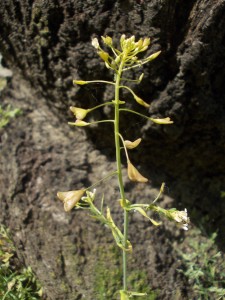
If we are going to be less species-ist than Haldane’s Coleopteran Creator, we need to cast our net wider than Aves, Odonata and Lepidoptera. The streets round here are planted with cherries, mainly; there are a few whitebeams, a rowan or two, a line of ash trees, and a few foreign hazels, they could be the American hazel, must check when they fruit. Under the cherries, the observant naturalist can note that Shepherd’s purse, the delightfully named Capsella bursa-pastoris (guess the poor man had so little money, it could fit in those tiny capsules) is already in fruit, soon to scatter its miniature seeds, and April isn’t even over: weeds have to be quick to survive on dry ground, perhaps. The ash trees support a lichen flora which is far more diverse than the basic Lecanora conizaeoides (low grey scaly lichen, no English name) that survived the pollution of the twentieth century; the trees have circles of Common Orange Lichen (Xanthoria parietina) and little patches of a grey leafy Parmelia lichen. And it doesn’t just consist of birds and other conspicuous day-flying objects, either. If that’s all we know to look at, we’re definitely amateur dilettante nature-lovers. Amateur is the French for lover, by the way, and dilettante is the Italian for someone that takes (idle) pleasure in something, the word is related to ‘delight’. Curious that both words should mean “ignorant dabbler” in English. But curiously appropriate, perhaps.
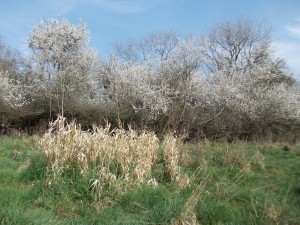
On this lovely spring day I drove around the backstreets of Ickenham until I found my way to Austin’s Lane (there’s The Old Fox pub marking its start) and so to Ickenham Marsh nature reserve (London Wildlife Trust). It’s tucked away behind Northolt airfield: the second world war Spitfires have been replaced by transport planes and executive jets, but the result has been to keep development at bay. The marsh is bordered with great drifts of blackthorn, the soft white blossom lovely in the broad hedges. Chiffchaffs were singing all over, and a mistle thrush rasped out its harsh flight call. Even the dunnocks looked splendid, their grey and brown plumage catching the sun as they chased low around the bushes. The breeze brought the occasional whiff of aviation fuel, but still there were some small patches of common orange lichen, Xanthoria parietina, and the grey lichen of bare twigs, Parmelia.
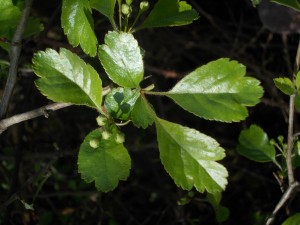
A complete surprise was the Midland Hawthorn by the Hillingdon Trail which crosses the reserve. The bush is the same size and shape as the common Hawthorn, but the leaves are only very slightly notched rather than deeply divided, and the flowers have two styles, not one (easy to remember as the common Hawthorn is C. monogyna ‘one-female’). An uncommon or perhaps just an easily-overlooked plant, something old and special on the edge of London.
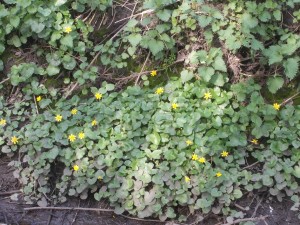
Also crossing the reserve, roughly northeast-southwest, is the Yeading Brook. I was just taking a photo of the first buttercups of spring, the lesser celandine, which likes wet muddy places, on the steep bank of the brook, when a kingfisher shot down the middle of the little stream, blue and turquoise. I turned to take my photo, and the kingfisher, or its mate, raced back past me again.